Today’s Current Affairs: 8th June 2024 for UPSC IAS exams, State PSC exams, SSC CGL, State SSC, RRB, Railways, Banking Exam & IBPS, etc
Table of Contents
Capital Account Convertibility:
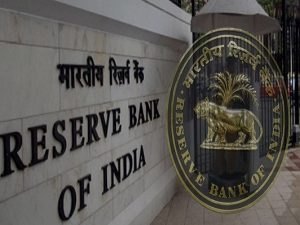
To stay “future-ready” for India’s fast-growing economy, the Reserve Bank of India (RBI) has set aspirational goals: capital account liberalization, internationalization of the Indian rupee (INR), universalizing digital payments, and globalizing India’s financial sector over a multi-year timeframe.
Capital Account Convertibility:
- Balance of Payments Account: It is a statement of all transactions between a country and the outside world. It consists of two accounts:
- Current Account: Deals with the import and export of goods and services.
- Capital Account: Involves cross-border movement of capital via investments and loans.
- Current Account Convertibility: Freedom to convert rupees to other currencies for payments without restrictions.
Capital Account Convertibility: - Freedom to conduct investment transactions without constraints.
- No limits on converting rupees to foreign currency for asset acquisition.
- No limits on NRIs bringing in foreign currency to acquire assets in India.
GNSS-Based Electronic Toll Collection (ETC) System:
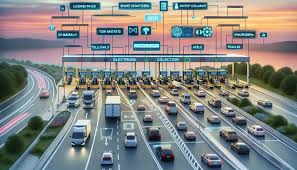
NHAI has invited expressions of interest (EoIs) from around the world for the implementation of GNSS-based (satellite-based) electronic toll collection to provide a seamless and barrier-free tolling experience for National Highways users.
- GNSS-based Electronic Toll Collection (ETC) system is a barrier-free method of electronic toll collection that uses Global Navigation Satellite System (GNSS) technology to track vehicles and calculate tolls based on the distance travelled on tolled highways.
- The system uses satellites or constellations of satellites to track vehicles’ movements and calculate tolls based on the distance travelled on tolled highways.
- Vehicles equipped with GNSS-enabled On Board Units (OBUs) are charged on the distance they have travelled on tolled highway stretches.
- NHAI plans to implement the GNSS-based electronic toll collection (ETC) system within the existing FASTag ecosystem, initially using a hybrid model where both RFID-based ETC and GNSS-based ETC will operate simultaneously.
NaturAfrica Initiative:
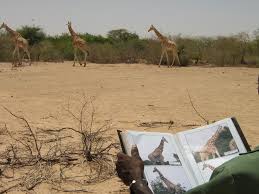
The European Commission (EC) has removed Tanzania from the list of countries eligible for its 18 million Euro conservation grant to be launched in East Africa as part of its NaturAfrica initiative.
- NaturAfrica initiative is a European Union (EU) program aimed at supporting biodiversity conservation in Africa through a people-centred approach.
- It identifies key landscapes for conservation and development, focusing on creating jobs, improving security, and sustainable livelihoods while preserving ecosystems and wildlife.
- The initiative is structured around two pillars: short-term actions in key landscapes and medium-term support to address the root causes of biodiversity loss and environmental degradation by integrating these concerns into other sectors.
European Commission:
- The European Commission is the executive body of the European Union (EU), responsible for proposing new laws and policies, monitoring their implementation, managing the EU budget, and ensuring the correct application of EU policies and laws across member states.
- It is composed of 27 members, known as Commissioners, each representing a different member state.
- The Commission is led by the President, who is elected by the European Parliament and proposed by the European Council.
Sticky Inflation:

Sticky inflation has dashed the hopes of early rate cuts with experts now pencilling in repo rate cuts by the RBI from December this year. Economists expect a shallow rate cut cycle with RBI likely to lower the repo rate by 75 – 100 basis points.
- Sticky Inflation refers to a phenomenon where prices do not adjust quickly to changes in supply and demand, leading to persistent inflation.
Features of sticky inflation:
- Prices for goods or services that don’t appear to be coming down anytime soon are considered sticky.
- Rising wages and prices for consumer goods and services are typically the main factors behind inflation stickiness.
- Prices for medical services, education, and housing are some of the most important factors that can contribute to sticky inflation.
- It erodes the purchasing power of consumers and puts pressure on housing affordability.
- It presents challenges for central banks in controlling inflation without causing a recession.
- To address sticky inflation, central banks usually raise interest rates.
- However, raising rates too fast can cause the economy to fall into a recession, while not raising them enough will allow prices to continue increasing.
Pump And Dump Scheme In The Stock Market:

The Securities Exchange Board of India’s (SEBI) recently slapped a fine of Rs 7.75 crore on 11 individuals for allegedly operating a ‘pump and dump’ scheme.
- Pump and Dump Scheme is a type of manipulation activity that involves artificially inflating the price of a stock through false and misleading information, only to sell the stock at the inflated price and leave investors with significant losses.
- It is particularly prevalent in the micro-cap and small-cap sectors, where companies often have limited public information and trading volumes are lower.
- First, a significant amount of stock in a relatively small or thinly traded company is acquired. These stocks are often referred to as ‘penny stocks’ because they trade at low prices and are more susceptible to price manipulation due to low trading volumes.
- Then the stock is aggressively promoted to create a buzz and attract investors. This promotion can take various forms, including sending out mass emails or newsletters with exaggerated claims about the company’s prospects, as well as misleading social media posts. Promoters aim to create buzz and drive interest in the stock.
- As the promotion gains traction, more investors buy into the stock, driving up its price due to increased demand. Sometimes, fraudsters may also engage in coordinated buying to further boost the price.
- During this phase, the stock often experiences rapid and significant price increases, creating the illusion of a hot, high-potential investment.
- Once the stock price has been pumped up sufficiently, the sell-off begins at the inflated prices.
- This selling pressure causes the stock price to plummet, often leaving unsuspecting investors with significant losses as the stock returns to its actual value or even lower.
Foreign Exchange Management Act (FEMA), 1999:

RBI is planning to rationalise the Guidelines for Export and Import of Goods and Services under the Foreign Exchange Management Act (FEMA), 1999.
- Foreign Exchange Management Act (FEMA), 1999 came into force on June 1, 2000, as a successor to the Foreign Exchange Regulation Act, or FERA, of 1973, with changing economic conditions in a post-liberalisation India.
- The main objective of FEMA is to facilitate external trade and payments and promote the orderly development and maintenance of the foreign exchange market in India.
- FEMA deals with provisions relating to procedures, formalities, dealings, etc. of foreign exchange transactions in India.
- The FEMA regulates various aspects of foreign exchange transactions, including the acquisition and holding of foreign exchange, the payment and settlement of foreign exchange transactions, the export and import of currency, and other related activities.
- The act also empowers the RBI to make rules and regulations to carry out the provisions of the act.
- It also makes the offence related to foreign exchange a civil offence.
- Violations of the provisions of FEMA can result in penalties and fines.
- FEMA’s head office is known as the Enforcement Directorate and is situated in Delhi.
- It envisages that the RBI shall have a controlling role in the management of foreign exchange. Since RBI cannot directly handle foreign exchange transactions, it authorizes “Authorised Persons” to deal in foreign exchange.
World Wealth Report 2024:
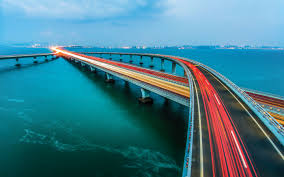
The number of high-net-worth individuals (HNWI) in India increased by 12.2% in 2023 compared to 2022 as per the Capgemini Research Institute’s World Wealth Report 2024.
- World Wealth Report 2024 is released by the Capgemini Research Institute.
- It covers 71 countries, accounting for more than 98% of global gross national income and 99% of world stock market capitalization.
- Global high-net-worth individuals (HNWI) wealth expanded by 4.7% in 2023, reaching $86.8 trillion. Similarly, the HNWI population increased by 5.1% to 22.8 million globally.
- HNWIs are individuals with investable assets of $1 million or more, excluding their primary residence, collectibles, consumables, and consumer durables.
- HNWIs are segmented into three categories based on wealth bands: Ultra-HNWIs ($30 million or more), Mid-Tier Millionaires ($5-30M) and Millionaires Next Door (USD 1-5M).
- Among the best performers in the APAC region were India and Australia, which recorded HNWI wealth growth of 12.4% and 7.9%, and HNWI population growth of 12.2% and 7.8%, respectively.
- A resilient economy and robust performance of the equity markets drove wealth growth in both of these countries.
- HNWI in India increased by 12.2% in 2023 vs 2022, bringing the total number of HNWI population to 3.589 million.
- The financial wealth of India’s HNWIs increased by 12.4% in 2023 to $1,445.7 billion, compared to $ 1,286.7 billion in 2022.
- India’s unemployment rate decreased to 3.1% in 2023, down from 7% in 2022
- India’s country’s market capitalisation increased by 29.0% in 2023, after an increase of 6% in 2022.
- The country’s national savings as a percentage of GDP also increased to 33.4% in 2023, compared to 29.9% in 2022.
Placental Mammals: Study

New research from Stockholm University shows that the typical mammalian heater organ, brown fat, evolved exclusively in modern placental mammals.
- A placental mammal is an animal that has a placenta.
- The placenta is a vascular organ formed during gestation of female mammals (except for monotremes and marsupials), built up of maternal and fetal tissues jointly, and which serves for the transport of nutrient substances from the mother to the fetus and to eliminate fetal waste products.
- Placental mammals carry their fetus in the uterus until they are born at an advanced stage.
- The young get their nourishment through a placenta before birth. The placenta delivers nutrients and oxygen to the fetus in the uterus.
- The placenta permits a long period of fetal growth in the uterus. As a result, the fetus can become large and mature before birth.
- Classified under the subclass Eutheria, placental mammals have 4,000 identified species.
- Fossil evidence shows that the first placental mammals evolved between about 163 million and 157 million years ago during the Jurassic Period (201.3 million to about 145 million years ago).
- The placentals include all living mammals except marsupials and monotremes (egg-laying mammals).
- Marsupials and monotremes have a less-developed, less-efficient type of placenta that limits the gestation period.
Arun-III Hydro Power Project:
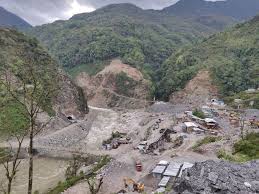
The 900 MW Arun III Hydropower Project in eastern Nepal, constructed with Indian assistance, recently achieved a significant milestone with a tunnel breakthrough.
- Arun-III Hydro Power Project is a 900 MW run-of-the-river hydropower project being constructed on the Arun River in Sankhuwasabha District of Eastern NEPAL.
- Arun is a tributary of the Koshi River in Nepal.
- The project comprises a 70-meter-tall and 466-meter-long concrete gravity dam and a Head Race Tunnel (HRT) of 11.74 km with underground an power house containing four generating units of 225 MW each on left bank.
- It is being developed with Indian assistance at a cost of Rs. 144 billion.
- Once completed, it will be the biggest hydroelectric facility in Nepal.
- It is being developed on a build-own-operate-and-transfer (BOOT) basis by Satluj Jal Vidyut Nigam (SJVN) Arun-III Power Development Company (SAPDC), a joint venture of the Government of India and the Government of Himachal Pradesh.
- SAPDC will operate the facility for a period of 25 years, excluding the construction period of five years, before transferring ownership to the Nepal government.
- Nepal will receive 21.9% of the electricity generated at the power plant as free power during these initial 25 years of commercial operations.
- The output from the power plant will be transferred to Muzaffarpur in India through a 317 km-long 400 kV double circuit transmission line.
Standard Missile 6 (SM-6):

The US SM-6 missiles are hogging the headlines again after photographs of a US Navy F/A-18 Super Hornet appeared carrying an air-launched variant of the SM-6, or the RIM-174 missile.
- Standard Missile 6 (SM-6) is a multi-mission missile capable of anti air warfare, terminal ballistic missile defense, and anti ship strike roles.
- It was developed by Raytheon Company, a major U.S. defense contractor, primarily for the United States Navy.
- The first version of the Standard Missile-6 became operational in December 2014.
- It is the first missile of its kind, with anti-air, anti-surface, and sea-based terminal defence capabilities.
- It has a length of 6.6 m and a diameter of 0.5 m. It weighs 1,500 kg and carries a 64 kg blast fragmentation warhead.
- It is an extended-range active missile (ERAM) that uses the sophisticated signal processing and guidance technologies of the AMRAAM (Advanced Medium-Range Air-to-Air Missile).
- The interceptor uses semi-active homing and active homing guidance to achieve accurate engagement of the assigned targets.
- At its surface-to-air published range, the SM-6 achieves ranges of 240 km, with even higher estimated ranges up to 463 km.
Onge Tribe:
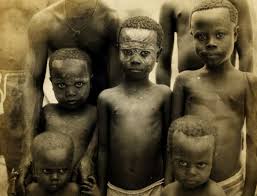
Andaman’s Onge tribe king Totoko and queen Priya welcomed a baby boy recently, bringing the tribe’s total population to 136.
- Onge Tribe are one of the most primitive tribes in India that belong to the Negrito racial ancestry.
- They are inhabiting Little Andaman Island, the most southerly island in the Andaman archipelago.
- They are a semi-nomadic group and are dependent on the ocean and the forest for sustenance.
- Unlike other religions, they do not believe in or follow firm worshipping practices or sacrifices.
- The colour of the teeth has a unique interpretation among Onges, who consider the pearly white teeth a symbol of death.
- They continue to chew the bark to impart a red colour to their teeth.
- They decorate their bodies and their faces with white and ochre clay. On special occasions, they place a greater emphasis on body ornamentation.
- Until the 1940s, the Onge were the sole permanent inhabitants of Goubalambabey (the Onge name for Little Andaman).
- They now share the 732 sq km island with around 17,000 settlers from India, Bangladesh, and the Nicobar Islands.
- The Onge population was also decimated following contact with British colonists and Indian settlers; it fell from 670 in 1900 to only 96 members by the early 2000s.
- In 1976, the Onge were settled in order to have ‘the basic facilities for hygienic living and protection against elements of nature’.
- They now live in a reserve in Dugong Creek (Little Andaman) that is a fraction of the size of their original territory.
- The Onge tribe is also one of the world’s least prolific and infertile communities. Infertility affects somewhat more than 40% of married couples.
Role Of Nuclear Technology In Global Food Safety:

An International Symposium on “Safe Food for a Better Life”, jointly organised by the Food and Agriculture Organisation (FAO) and the International Atomic Energy Agency (IAEA) emphasised the importance of nuclear technologies for measuring, managing and controlling food safety.
- Furthermore, the symposium highlighted the potential use of nuclear technology in ensuring food security.
- The One Health approach recognises the interconnectedness of human, animal, and environmental health; nuclear techniques can be used to detect and monitor contaminants, pathogens, and toxins in food and the environment.
- Polymerase Chain Reaction (PCR) tests is a molecular nuclear technique, to rapidly detect animal diseases in less than a day.
- Food irradiation is a process of exposing food to ionising radiation to eliminate harmful bacteria, pathogens, and pests; nuclear technology helps to extend the shelf life of food products and ensure their safety for consumption.
- Stable isotope analysis is a nuclear technique that is used to determine the origin and authenticity of food products and this helps to detect adulteration and verify labelling claims.
- Past nuclear fallouts are actually helping scientists when it comes to measuring and assessing soil erosion, radioactive nuclides left behind after nuclear events can help scientists determine the health of soils and rate of erosion.
- Nuclear techniques, such as the Sterile Insect Technique (SIT), are used for pest control in agricultural production systems.
- This technique limits reproduction and suppresses insects and pests, thereby reducing the need for chemical pesticides, which can negatively impact food safety
- Nuclear technology applied in crop breeding facilitates the development of enhanced varieties capable of adapting to climate change.
- By subjecting seeds to irradiation by gamma rays, X-rays, ions, or electron beams, genetic alterations are initiated, expanding the genetic diversity available for breeding purposes.
QS World University Rankings 2025:

The latest QS World University Rankings for 2025 were released revealing significant improvements for Indian universities and notable global standings.
Key Highlights of the Rankings:
- QS Quacquarelli Symonds (QS) offers unrivaled data, expertise, and solutions for the global higher education sector.
- For the compilation of the 2025 QS World University Rankings, QS claims to have analysed 17 million research papers, 176 million citations, data from 5,600 institutions worldwide and insights from 175,798 academics and 105,476 employers.
- Massachusetts Institute of Technology (MIT): Retained its position as the best institute globally for the 13th consecutive year.
- Imperial College London: Improved from sixth to second.
- Harvard University and University of Oxford: Jointly held the third rank.
India’s Position:
- In this edition of the rankings, with 46 universities, the Indian Higher Education system is the seventh most represented globally and the third in Asia, trailing only Japan (49 universities) and China (71 universities).
- 61% of Indian universities’ ranking has improved, with IIT Bombay gaining the top spot in India.
- A total of 61% of Indian universities have risen in rank this time, while 24% have maintained their positions.
- Citations per Faculty: India’s performance in this indicator is strong, with a score of 37.8, surpassing the global average of 23.5.
- This is the second-highest in Asia among countries with more than 10 ranked universities.
- However, India lags in the International Faculty Ratio and International Student Ratio indicators, underscoring the need for greater international collaboration and exchange
Top Indian Institutes:
- IIT Bombay: Leading in India, IIT Bombay climbed from 149th in 2024 to 118th in 2025.
- IIT Delhi: Achieved the second position in India, moving up 47 ranks from 197th to 150th.
- IIT Indore: The only Indian institute that declined in ranking, dropping from 454th to 477th.
- New Entries: Symbiosis International (Deemed University) entered the top 20, ranked between 641-650 globally.
Policy Rate Unchanged : RBI
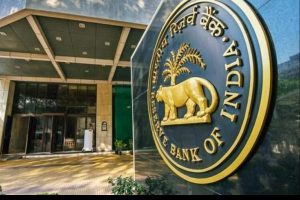
The Reserve Bank of India (RBI) decided to keep the policy rate unchanged at 6.5% for the eighth consecutive time.
- The Monetary Policy Committee (MPC) will maintain a tight control on inflation and remain watchful of elevated food inflation amid the expectation of a normal monsoon.
- The rate increase cycle was paused in April last year after six consecutive rate hikes, totalling 250 basis points since May 2022.
- The RBI raised the growth projection to 7.2% from an earlier estimate of 7% for the current financial year.
- Inflation targeting in India is a monetary policy framework adopted in 2016, where the Central Government, in consultation with the RBI, sets a target inflation rate once in five years.
Minuteman III : Intercontinental Ballistic Missile

The US conducted an unarmed Minuteman III intercontinental ballistic missile (ICBM) test from Vandenberg Space Force Base, California.
- The LGM-30G Minuteman III, a solid-fueled ICBM first deployed by the USAF in the 1960s, serves as the sole land-based component of the U.S. nuclear triad.
- Designed and manufactured by Boeing, it was initially intended for a ten-year service life but has been continually modernized
- Intercontinental ballistic missiles (ICBMs) are long-range missiles capable of delivering nuclear warheads across continents.
- They are a key component of a nation’s nuclear deterrent strategy due to their ability to strike distant targets quickly.
- In India, examples of ICBMs include the Agni series, such as Agni-V, which has a range of over 5,000 kilometres, and Agni-VI, which is currently under development and is expected to have an even longer range.




